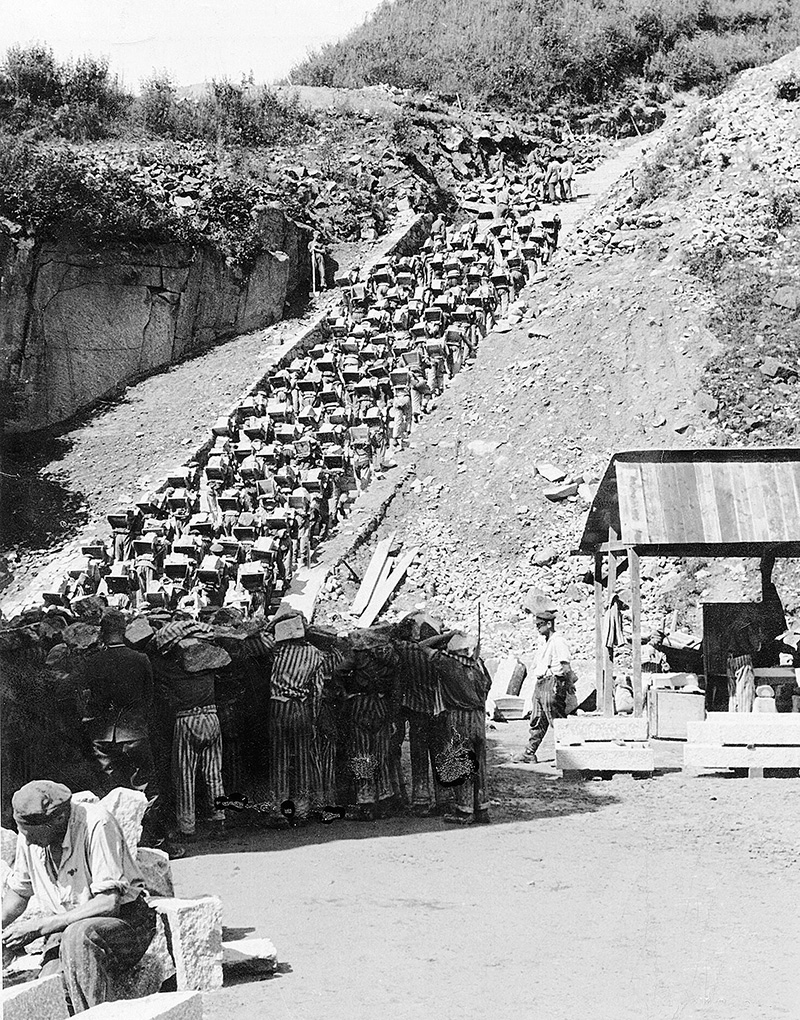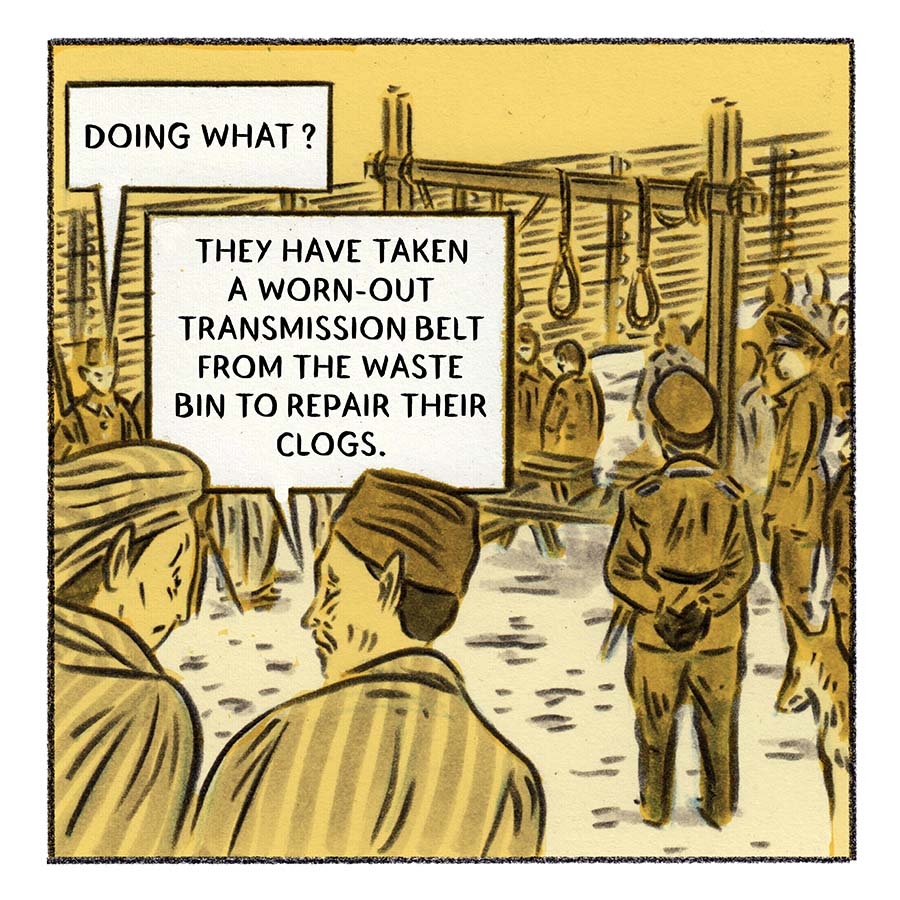






Forced labour in the National Socialist state
The National Socialist regime subjected more than 20 million people in the German Reich and the occupied territories to forced labour. Both foreign civilians, detainees and prisoner of war of different nationalities were affected. In the concentration camps, forced labour was part of the extermination strategy ("extermination through labour"). Forced labourers had to carry out heavy manual work in agriculture, the arms industry, in mining and crafts enterprises. As the war progressed, increasingly harsh working conditions led to high mortality rates among the forced labourers.
Prisoners at forced labour in the protective custody camp of Dachau Concentration Camp

Bundesarchiv, Bild 152-01-26 / CC-BY-SA 3.0
© Friedrich Franz Bauer, 1933
The National Socialist regime subjected more than 20 million people in the German Reich and the occupied territories to forced labour. Both foreign civilians, detainees and prisoner of war of different nationalities were affected. In the concentration camps, forced labour was part of the extermination strategy ("extermination through labour"). Forced labourers had to carry out heavy manual work in agriculture, the arms industry, in mining and crafts enterprises. As the war progressed, increasingly harsh working conditions led to high mortality rates among the forced labourers.
Prisoners at forced labour in the protective custody camp of Dachau Concentration Camp

Bundesarchiv, Bild 152-01-26 / CC-BY-SA 3.0
© Friedrich Franz Bauer, 1933

Forced labour in the arms industry
After the start of the war and the resulting mobilisation of large parts of the male population, there was a shortage of labour in Germany, especially in the German arms industry. At the beginning of the Second World War, German women were therefore increasingly employed in the war industry - although this contradicted the traditional National Socialists image of women. In addition, prisoners of war from Poland, France, the Netherlands and Great Britain were used as forced labourers as early as 1940. New technological developments, such as the V2 rocket and the Messerschmitt jet fighter, were supposed to get the Germans out of their increasingly hopeless military situation in the second half of the war and bring about a turning point. After thousands of prisoners of war, especially from the Soviet Union, had already died from miserable working conditions and malnutrition during forced labour in the arms industry, increasing numbers of concentration camp prisoners were used for work in the arms industry from 1943 onwards. Most of them, however, were not employed in manufacturing, but had to build underground facilities for the relocation of arms factories. Tens of thousands died from the consequences of extremely hard physical labour combined with completely inadequate food and care.
Forced labourers from the Mauthausen Concentration Camp at work in the quarry.

Bundesarchiv, Bild 192-269 / CC-BY-SA 3.0
After the start of the war and the resulting mobilisation of large parts of the male population, there was a shortage of labour in Germany, especially in the German arms industry. At the beginning of the Second World War, German women were therefore increasingly employed in the war industry - although this contradicted the traditional National Socialists image of women. In addition, prisoners of war from Poland, France, the Netherlands and Great Britain were used as forced labourers as early as 1940. New technological developments, such as the V2 rocket and the Messerschmitt jet fighter, were supposed to get the Germans out of their increasingly hopeless military situation in the second half of the war and bring about a turning point. After thousands of prisoners of war, especially from the Soviet Union, had already died from miserable working conditions and malnutrition during forced labour in the arms industry, increasing numbers of concentration camp prisoners were used for work in the arms industry from 1943 onwards. Most of them, however, were not employed in manufacturing, but had to build underground facilities for the relocation of arms factories. Tens of thousands died from the consequences of extremely hard physical labour combined with completely inadequate food and care.
Forced labourers from the Mauthausen Concentration Camp at work in the quarry.

Bundesarchiv, Bild 192-269 / CC-BY-SA 3.0
























